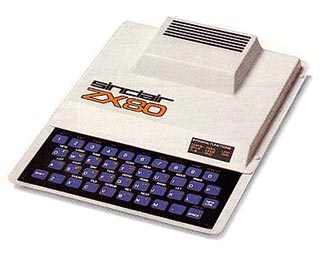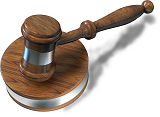Sinclair ZX80
Vital Statistics
Introduced January 1980 |
|
![]()
The Sinclair ZX80 is often regarded as the machine that launched the personal computer revolution. Development of the ZX80 began in May 1979 by Sinclair and his engineers. Sinclair was inspired to create the machine after seeing how much his son enjoyed using a Tandy TRS-80 but guessing that many people would be put off buying one because of the high price - just under £500. Sir Clive Sinclair introduced the ZX80 out of his then new company, Science of Cambridge (later to be renamed Sinclair Computers Ltd, and eventually Sinclair Research Ltd) on 29th January 1980. It was called the '80' because of the year it was launched, and the 'ZX' was added as a prefix "because the letters sounded cool and futuristic" (Sir Clive's own words). Unlike Sinclair's previous foray into the computer hobbyist market, the MK14, this machine would ship with BASIC, based on the ANSI standard. But the aim was to keep costs down and that precluded paying a licence fee to Microsoft, who provided their version of BASIC to other computers of the time. To this end, Sinclair had already met with John Grant of Nine Tiles in April 1979 to discuss the software requirements of the ZX80. Given the tiny R&D budget, Nine Tiles stood to make hardly any money out of the deal, but the feeling was that the project was exciting and worthwhile, and one the company would benefit from being associated with. Sir Clive credits the rest of his small team at Cambridge, not least Nine Tiles, the Cambridge-based company that made the BASIC (Beginner's All purpose Symbolic Instruction Code) operating software. The ZX80 hardware was designed by Jim Westwood, who joined Sinclair Radionics in 1963. A self-taught Engineer, he was responsible for bringing many of Sir Clive's often impossible projects to life. A favorite among his early designs, the ZX80 was the first home computer sold anywhere in the world for less than £100. "It was a real breakthrough in the use of cheap components," says Westwood. "It's something which ought to be in the Ark by now but I am still proud of it.". Westwood stayed with Sinclair through the 1980s, developing the ZX81 and some aspects of its successor, the ZX Spectrum. After Amstrad acquired Sinclair Research, Westwood co-founded Cambridge Computer with Sinclair in 1986 to design the hardware for the radical battery powered portable Z88 computer. The ZX80 came with a 4K ROM built-in which held the BASIC interpreter, and 1K RAM, expandable to 16K. Offered in kit form (£79.95) or ready-built (99.95), it was the first home computer to hit the sub-£100 price. The ZX80 came with a power supply, RF lead to plug into a standard television, two tape leads for saving/loading to an ordinary household cassette recorder, the user manual, and a test program sheet, which you could type in to see what the ZX80 could do! Two "RAMpack"s were available for the ZX80 - initially just a white 1K-3K RAMpack was offered. Later, when the price of memory chips dropped, a black 16K RAMpack was made available. The kit was launched at a computer fair in the first week of February 1980, and while it was not a massive success by comparison with the ZX Spectrum, it turned Sinclair's fortunes around, eventually earning him a knighthood, and it sold well enough to persuade him to make a new computer - the ZX81. When the ZX81 was introduced in 1981, Sinclair offered an upgrade kit for existing ZX80 users. This kit comprised a new ROM chip (8K capacity to replace the 4K ZX80 original one), and a newer keyboard overlay to handle the new BASIC commands with fitting instructions. The Sinclair ZX80 is revered in the UK as the first machine to bring home computing to the masses, and for starting a line of development that led to the growth of the British games industry. |
ZX80 News09 July 2018FloppyDays Podcast interviews John Grant, developer of the BASIC for the Sinclair ZX-80
18 April 2014ZX80Core Transparent case
05 April 2014ZX-TEAM Meeting - April 5th 2014 in Mahlerts, Germany
|














